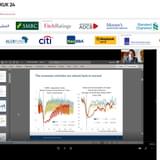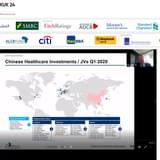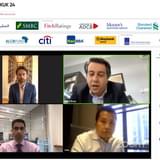As the world prepares itself for a Trump presidency, one of the unexpected benefactors of the president-elect’s proposed domestic policies has been copper. Prices for the reddish-brown metal surged over 20% since the beginning of the month, after falling steadily in the past few years.
The price nearly reached US$2.7 per pound, before readjusting slightly on Wednesday and settling around the US$2.5 mark. The sudden spike surprised many market watchers, as there were no obvious fundamental factors driving it.
The two main drivers of this shift appear to be better-than-expected economic figures in China and Donald Trump’s promise to rebuild infrastructure in the US. But these are rather precarious grounds for such a boost, particularly as growth across other metals has been much more modest.
“From a trading viewpoint there has been some significant positioning in copper prior to Trump’s election and in its aftermath,” admitted Hunter Hillcoat, Mining Analyst at Investec Securities. “A lot of it has been Chinese-driven: Chinese futures options were running at 4 times normal level, which put a lot of heat into the copper price.”
Observers believe that trading strategies – namely, Chinese investors diversifying renminbi exposure into a USD asset class, particularly one that appeared under-priced – had more of an effect than any real change in the demand vs supply ratios.
“In our view, and it is reflected by industry participants like Freeport and BHP Billiton, there is no fundamental reason behind the appreciation we’ve seen, because we still expect an oversupply in the markets over the next couple of years,” Hillcoat suggested.
Throughout the year copper has been one of the worst performing commodities, amid concerns that rising stockpiles of metals are going to dampen demand in the coming years. But the fact that it stayed behind other metals this year also contributed to copper’s sudden rise, as it played catch-up with the market.
According to Hillcoat, the issue was in fact not underperforming copper, but other metal prices overreaching.
“Copper has traditionally been the bellwether for global economic growth and strengthening. So the fact that copper stayed relatively steady as other commodities, like iron ore or nickel, grew, suggested to us that their growth is driven by individual circumstances, but does not reflect global economic trends,” said the analyst, adding that the recent rally is indicative of the market expectation for a return to growth.
Looking forward, the current level is seen by many industry leaders as close to fair value, but future shifts will depend on supply and demand, which is hard to predict. As there are no major capacity expansions taking place, supply is expected to remain steady in the midterm.
Demand could be boosted by advances in renewables, as production of solar panels and wind turbines requires copper. It could also rise on more infrastructure development. But some suggest that would not be enough to sustain a high price. For copper demand to be robust requires a positive economic situation in China, and in the global economy.
What complicates matters further, is that the market is constantly attempting to price in future trends. According to Goldman Sachs’ estimates, at current pricing of $5,600/t, the copper market appears to be pricing as much as 6% global copper demand growth in 2017 – more than double of the demand growth seen in 2016.
Whether those expectations are justified, only time will tell.
“Is the copper price going to stay at current levels? We suspect not,” Hillcoat admitted. “But some investors might think otherwise, so they could double down on these assets and in that case the bond market will come into play.”
“There will certainly be an opportunity with a higher copper price to refinance existing bonds, extending short-dated bonds to longer-dated bonds, for example,” he added.
Hernandez anticipates that supply growth will likely begin to fall from around 2019 and the market will face a substantial deficit from around 2021 as demand will rise on the back of long-term socioeconomic trends, such as urbanisation in emerging markets and a shift away from fossil fuels.
But the current spike in price may not be sustainable in the medium term, as the report by Goldman Sachs suggested, with the market becoming too bullish too quickly on copper and other metals.
“We continue to see supply differentiation going forward,” the report concluded.









